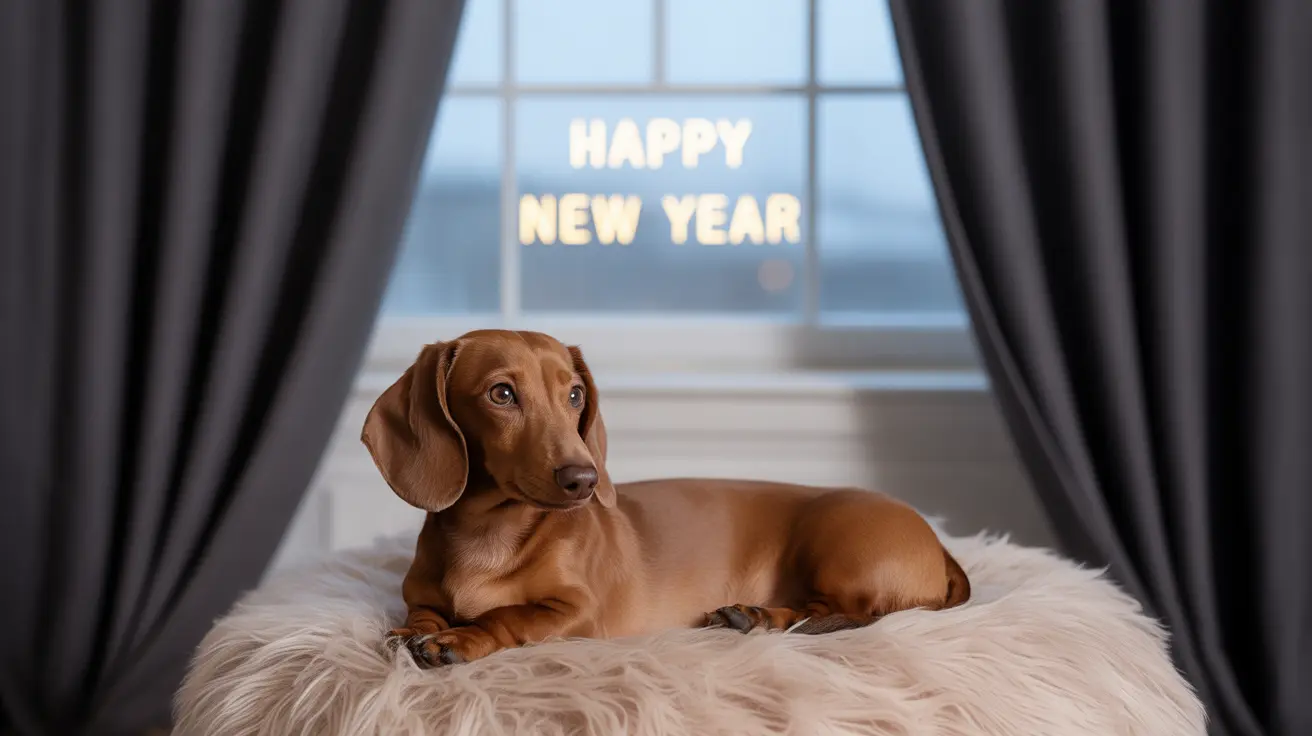For many dogs, fireworks can trigger intense fear and anxiety due to their loud, unpredictable nature and bright flashes. As pet parents, understanding how to help our dogs cope with fireworks is crucial for their wellbeing and safety. This comprehensive guide will explore effective strategies, from creating safe spaces to behavioral training, helping your furry friend stay calm during firework displays.
Understanding Why Dogs Fear Fireworks
Dogs have incredibly sensitive hearing, up to four times more acute than humans. This heightened sensitivity makes the sudden, explosive sounds of fireworks particularly distressing. The unpredictable nature of fireworks - random booms and flashes without warning - prevents dogs from preparing themselves mentally, leading to increased anxiety and stress responses.
Additionally, the combination of loud noises, bright flashes, and even subtle changes in air pressure can create a multi-sensory experience that many dogs find overwhelming. This natural response is often further complicated by past negative experiences or learned behaviors from other pets or family members.
Recognizing Signs of Firework Anxiety in Dogs
Being able to identify when your dog is experiencing firework-related stress is the first step in providing effective help. Common signs include:
- Excessive panting and drooling
- Trembling or shaking
- Hiding or seeking shelter
- Destructive behavior
- Uncontrolled urination or defecation
- Excessive barking or whining
- Pacing and restlessness
- Refusing food or treats
Creating a Safe Haven for Your Dog
One of the most effective strategies for helping dogs during fireworks is establishing a secure, comfortable space where they can retreat. Choose an interior room away from windows and external walls, and consider these elements:
- Blackout curtains or window covers to block flashing lights
- Comfortable bedding and familiar toys
- White noise machines or calming music
- A secure crate if your dog is crate-trained
- Easy access to fresh water
Preparation and Prevention Strategies
Taking proactive steps before firework events can significantly reduce your dog's anxiety:
- Exercise your dog thoroughly earlier in the day
- Keep them indoors before fireworks typically begin
- Update identification tags and microchip information
- Secure all possible escape routes
- Consider using anxiety wraps or thundershirts
- Install pheromone diffusers several days in advance
Professional Intervention and Medical Support
For dogs with severe firework anxiety, professional help may be necessary. Consult with your veterinarian about:
- Anti-anxiety medications for acute situations
- Long-term behavioral modification plans
- Natural calming supplements
- Referrals to certified animal behaviorists
Frequently Asked Questions
How can I help my dog stay calm during fireworks?
Create a safe, quiet space indoors, use sound masking techniques like white noise or music, maintain a calm demeanor yourself, and consider anxiety wraps or veterinarian-prescribed calming aids. Exercise your dog earlier in the day and keep them inside during firework displays.
What are the signs that my dog is scared of fireworks?
Common signs include excessive panting, trembling, hiding, destructive behavior, accidents in the house, excessive vocalization, pacing, and refusing food. Some dogs may also show subtle signs like lip licking or yawning.
Are there any medications or supplements that can help dogs with fireworks anxiety?
Yes, veterinarians can prescribe anti-anxiety medications for acute situations. Natural supplements like L-theanine or melatonin may also help. Always consult your veterinarian before giving any medication or supplement to your dog.
How can I desensitize my dog to fireworks noises?
Gradually expose your dog to recorded firework sounds at very low volumes, paired with positive experiences like treats or play. Slowly increase the volume over weeks or months as your dog remains comfortable. This process requires patience and consistency.
Should I crate my dog during fireworks, and what's the best way to create a safe space?
If your dog is crate-trained and views their crate as a safe space, then yes. Create a comfortable environment in an interior room, add familiar bedding and toys, and cover the crate with a blanket to further muffle sounds and block light. Never force your dog into a crate if they're not comfortable with it.






